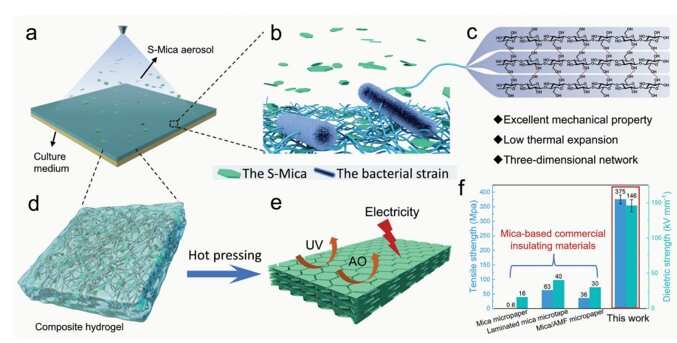This article has been reviewed according to Science X's editorial process and policies. Editors have highlighted the following attributes while ensuring the content's credibility:
fact-checked
peer-reviewed publication
proofread
Researchers develop an extreme environment-resistant nanopaper

With the in-depth exploration of extreme environments such as Antarctica, the moon, and Mars, frequent emerging extreme conditions, including strong ultraviolet (UV), atomic oxygen (AO), and high and low temperature alteration, have become major obstacles to further exploration.
Under these extreme environments, the physical-chemical properties of materials are subject to changes, which may lead to damage to critical equipment and devices. After being exposed to extreme environments for a long time, most of the current polymer-based composites confront fatal problems, such as softening at high temperatures and brittleness at low temperatures. Therefore, it is crucial for researchers to design a high-performance protective material that is resistant to extreme environments.
A team, led by Yu Shuhong from the University of Science and Technology of China (USTC) of the Chinese Academy of Science (CAS), developed a high-performance cellulose-based nanopaper that maintains excellent mechanical and electrical insulating properties under extreme conditions. Based on the aerosol-assisted biosynthesis (AABS) method developed earlier by this team, the nanopaper was synthesized by combining bacterial cellulose (BC) and synthetic mica (S-Mica). This work was published in Advanced Materials.
In this work, the researchers used the AABS strategy to uniformly load synthetic mica nanosheets into the composite hydrogel with bacterial cellulose and then obtained the final nanopaper material with a nacre-like structure by hot pressing. Thanks to the "brick-and-mortar" microstructure of the nanopaper, it exhibits high tensile strength (375 MPa), high modulus (14.9 GPa), and high toughness (16.44 Mj m-3), as well as excellent mechanical properties, including outstanding foldability and bending resistance.
In addition, the "brick-and-mortar" structure inside the material takes full advantage of the high dielectric strength of S-mica, which endows the nanopaper with a remarkable electric breakdown strength (145.7 kV mm-1). Compared with pure BC nanopaper, the corona resistance life of BC/S-Mica nanopaper is significantly improved, even surpassing that of commercial polyimide (PI) films.
This BC/S-Mica nanopaper shows an excellent performance under extreme conditions of UV, AO, and high and low temperature alteration, which provides an ideal protective material for future exploration of extreme environments.
More information: Wen‐Bin Sun et al, Nacre‐Inspired Bacterial Cellulose/Mica Nanopaper with Excellent Mechanical and Electrical Insulating Properties by Biosynthesis, Advanced Materials (2023). DOI: 10.1002/adma.202300241
Journal information: Advanced Materials
Provided by University of Science and Technology of China





















